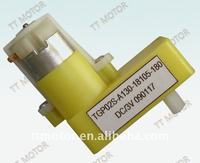Disha Karnataki
Full Member level 5

i have a l293dne & i have connected it to my microcontroller as shown:
https://3.bp.blogspot.com/-7QojImEY...jddXMw/s1600/motors-to-l293dne-to-arduino.png
battery is 18v (two 9v battery in series) also tried using 9v .The voltage produced across the pins (3 & 6 for right wheel motor & 11, 14 for left wheel motor as per above image) is perfect i.e around 9v is produced the motor i am using is as here:

they can operate from 9v-12v.
the pins of l293dne produce exactly 18v but, these motors do not rotate.
But when i separately connect battery with motor it runs.
when i connected a led it litted up even when i connected a motor of 3-5v it also worked properly.
But these motors(as in image) are not running what may b the reason?
https://3.bp.blogspot.com/-7QojImEY...jddXMw/s1600/motors-to-l293dne-to-arduino.png
battery is 18v (two 9v battery in series) also tried using 9v .The voltage produced across the pins (3 & 6 for right wheel motor & 11, 14 for left wheel motor as per above image) is perfect i.e around 9v is produced the motor i am using is as here:

they can operate from 9v-12v.
the pins of l293dne produce exactly 18v but, these motors do not rotate.
But when i separately connect battery with motor it runs.
when i connected a led it litted up even when i connected a motor of 3-5v it also worked properly.
But these motors(as in image) are not running what may b the reason?
Last edited by a moderator:

